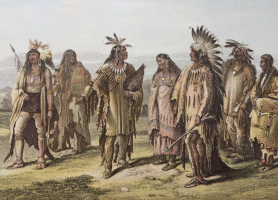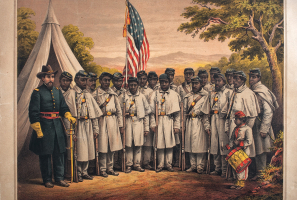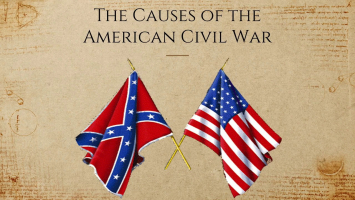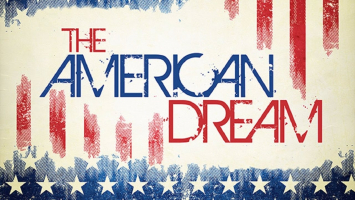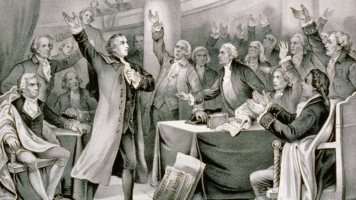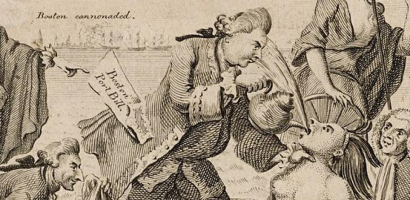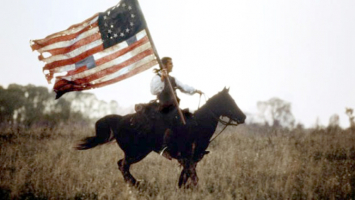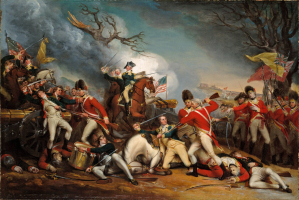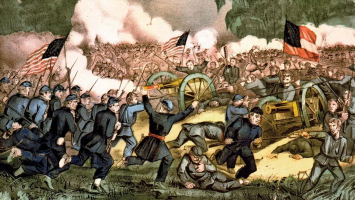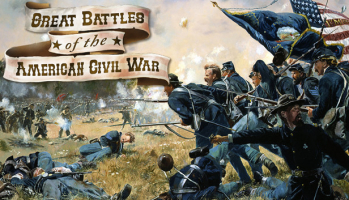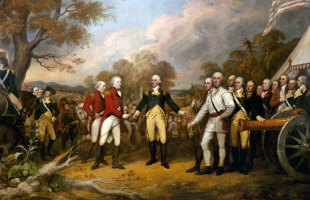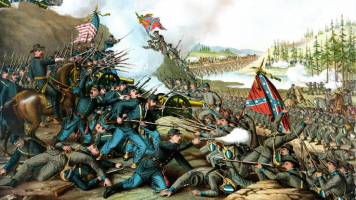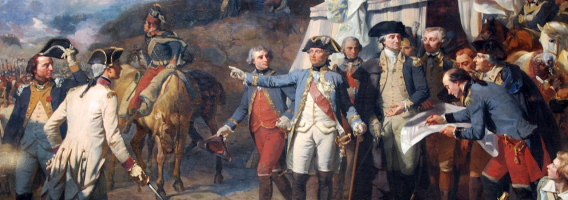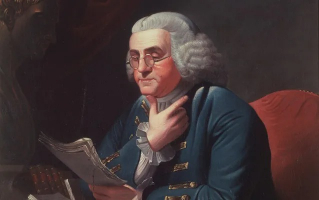Top 10 Reasons the American Confederacy Was Also Bad For its White Population
Let's clear up one thing: Of course, no one needs to be reminded that a coalition of states formed primarily to keep four million Black people in servitude ... read more...won't be beneficial for that group. Here are some Reasons the American Confederacy Was Also Bad For its White Population.
-
The Confederacy passed the first conscription law of the Civil War in April 1862, requiring all physically fit males between the ages of 18 and 35 to serve three years of active duty unless they had a job that was crucial to the war effort. This law was not one that was taken lightly from the start.
For example, the same Captain James Duff started enforcing conscription in Hill Country after he oversaw the murders of all those German immigrants at Nueces. His tactics would involve torching houses and beheading 20 draft resisters. In reality, the immigrants' initial attempt to flee Texas was greatly influenced by the harsh enforcement of the draft.
Two of the conscription act's provisions in particular gave rise to animosity. Secondly, there was the $300 replacement cost for a substitute that could be recruited. Second, owners of 20 or more slaves were excluded from the draft (although this was later amended, being lowered to 15 slaves).
This gave rise to the adage that "it was a wealthy man's war and a poor man's struggle" at the time. At demonstrations like Newton Knight's historic anti-Confederacy revolt in Jones County, Mississippi, more individuals lost their lives. Although class had a significant role in the Civil War, race played a significant one as well.

Image by Sharefaith via pexels.com 
Image by Pixabay via pexels.com -
More realistic than he might have appeared is Dr. King Schultz, the abolitionist bounty hunter from the 2012 movie Django Unchained. The majority of one ethnic group that fought for the Union during the Civil War, although only around 20% of German immigrants to America in the 19th century fought for the Confederate, were known to be the most fervent abolitionists in the country. The results of this loud opposition were fatal for numerous German immigrants in the South.
68 German immigrants from the Texas Hill Country region set out for the Mexican border in August 1862 as part of a detour to seek refuge in the Union-controlled city of New Orleans. Confederates led by Captain James Duff intercepted them near the Nueces River. 36 immigrants and 12 Confederates died in what was afterwards referred to as a battle or a massacre; nine of the immigrants were murdered after they turned themselves in. The memorial that was erected later to remember the dead is the only one of its kind in the states of the South that is in German.
Image by Pixabay via pexels.com 
Image by Nout Gons via pexels.com -
It makes sense that feeding the population with food thus late in the conflict would be challenging. In addition to reducing the flow of supplies due to the Union navy's blockade, the Union soldiers also purposefully interfered with rail systems and other modes of transportation in order to hamper the war effort. In fact, the New York Times began highlighting how much more expensive food was in Southern cities than it was in Northern ones as early as June 20, 1861, just a few months into the war.
For example, a bushel of corn cost $0.56 in New York City while it cost $0.70 in Memphis, and a barrel of pork cost $17.50 in Philadelphia while it cost $26 in New Orleans. As the war dragged on, this inequality only grew worse, especially after the Confederates began printing money in large quantities and hyperinflation set in, leading to bread riots in places like Richmond, Virginia, the Confederate capital.
The Southerners first believed that their agricultural economy would enable their separation and cause the North to go hungry. Contrary to popular belief, Union farms used two-thirds of all farm machinery, and a considerably more robust infrastructure allowed for speedier distribution before food rotted. This is because Southern farmers' reliance on slave labor had reduced their motivation to mechanize. The Union benefited from advantages like 80% of wheat output and almost as much oat production as a result. Hence, at a time when the Confederate most needed innovation, slavery stifled it.
Image by Xuân Thống Trần via pexels.com 
Image by Pratikxox via pexels.com -
The Confederate implemented a travel pass system on April 12, 1862. Any person traveling between states had to bring a brown booklet with them. Spy activity was rampant on both sides of the conflict, and the Southern soldiers struggled greatly with desertions. Several able-bodied males were imprisoned for not having them on hand, despite the fact that they were only utilized for train passengers because foot and privately-owned vehicle travel were not similarly prohibited.
This was the Confederacy's most unpopular restriction on freedoms out of all of them. The primary complaint was that the requirement reminded people too much of the documents that slaves had to carry with them when they went on trips with their masters. The fact that the Union was so lenient about travel permits—not even needing them for those traveling from the South until 1863—certainly didn't help

Image by Pixabay via pexels.com 
Image by Pixabay via pexels.com -
Considering that Americans consumed three times as much alcohol in the 19th century as they do today, this may seem relatively insignificant in comparison to property seizures and executions, but it had real repercussions for many Southerners, especially those susceptible to delirium tremens. Yet, Confederate governments continued to enact harsh regulations, such as Tennessee's prohibition on the sale of liquor, the country's most popular beverage at the time, within four miles of the homes of "national or confederate soldiers."
Even it was insignificant in comparison to the prohibition on distilling whiskey and brandy across the whole Confederacy. In secret, it was more because the copper used in distillation was needed for artillery, even if the official explanation was that the maize and other products were needed to address food shortages.
These alcohol restrictions were wildly ineffective, much like the infamous Prohibition of the 1920s and 1930s. For instance, General John Winder shut down saloons and outlawed the selling of alcohol in general on March 1, 1862. The provost guards responded by continuing to use fake prescriptions to buy alcohol from apothecaries, appearing to consume the same amount of alcohol as previously. The sale of illegal alcohol led to the arrest of numerous pharmacists.
Image by 𝙊𝙎𝙑𝘼𝙇𝘿𝙊 𝙍𝙊𝙈𝙄𝙏𝙊 via pexels.com 
Image by RODNAE Productions via pexels.com -
100,000 white soldiers from Confederate states served in the Union during the war, mostly as scouts and anti-guerrilla troops in occupied territories, despite popular perceptions to the contrary. Only North Carolina contributed 10,000. Paranoia and the descents into extreme cruelty it may bring erupted throughout numerous locations in Southern states under circumstances where loyalties were considerably more divided than we've long been led to think.
For instance, seven white men were executed by hanging on October 1, 1862 in Red River, Texas because they were thought to support the Union. As they were at least given a show trial, they were truly representations of the Confederates acting in a pretty constrained manner. Soon after, 14 more people were put to death without even that.
By October 14, two people had been shot dead and 40 alleged Unionists had been hanged. Unionists were slain or ejected from their farms in St. Francis and Pope Counties in Arkansas the previous year. It should come as no surprise that guerilla warfare erupted in numerous locations throughout the western Confederate states, striking in both directions.

Image by Pixabay via pexels.com 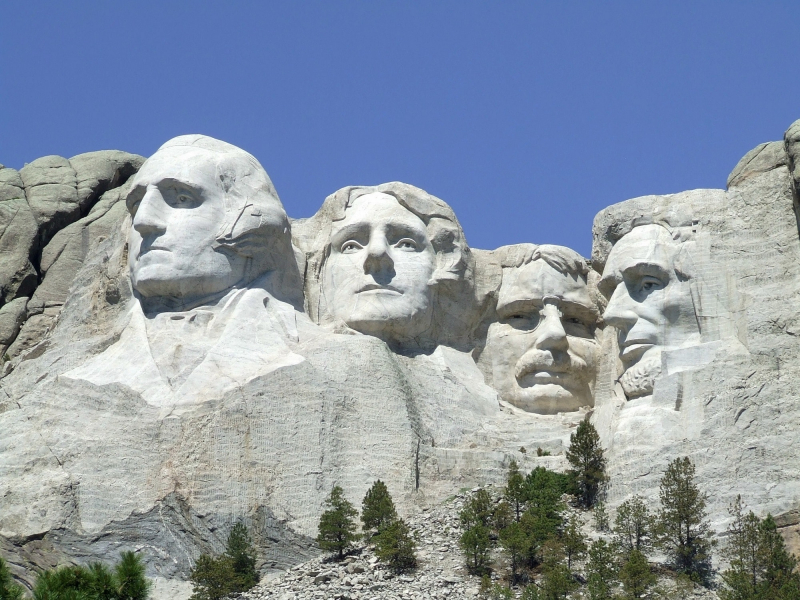
Image by Pixabay via pexels.com -
Just approximately 50% of the population attended public schools in the South, compared to around 90% in the North, because most of the South was more rural than the North and children would be needed for farm work from an early age. Huge wealth inequality, as stated in the first paragraph, made matters worse because it encouraged elites to take their kids to private schools, further depriving schools in sparsely populated areas of funding.
That's not to suggest that measures weren't made to counter that. In the decades prior to the Civil War, there were concerted and momentarily successful grassroots initiatives to increase access to public education in Louisiana, Mississippi, and Alabama, according to Sarah Hyde's Schooling in the Antebellum South. However, economic catastrophes like the Panic of 1837 foiled the efforts. That was a structural fault in a society where income disparity was so pervasive.

Image by Julia M Cameron via pexels.com 
Image by Karolina Grabowska via pexels.com -
When Abraham Lincoln suspended habeas corpus (also known as the right to a trial) in April 1861, it drew some of the most frequent accusations of his presidency. But, when they renewed it from 1863 to 1864, the Confederacy went one step further than Lincoln, which is a much less well-known fact.
Some have claimed that this was more of a formality because, whether Habeas Corpus was technically suspended or not, the Confederate forces seized thousands of citizens and imprisoned them without a trial. In fact, a Florida reporter was detained without charge or trial for speaking out against the attack on Fort Sumter on the very day the war officially began. These were the kinds of situations where a suspect would beg for a trial, as we'll see in future entries.

Image by Lex Photography via pexels.com 
Image by David Buchi via pexels.com -
The First Confiscation Act, which was essentially a pretext for liberating slaves by taking them as property, was passed by the Union congress in August 1861. The Act of Sequestration, which declared anybody disloyal to the Confederacy might have their property seized by the government, was approved by the Confederate congress as reprisal in the same month. Although this was meant to facilitate the seizure of Union property, things quickly got out of hand because government officers were forced to rely on local, sometimes grievance-driven evidence to determine who was disloyal.
Eastern Tennessee was the part of the country that suffered the most from this approach. Conflicts with the Confederate authority were all but inevitable because this region was staunchly pro-Union (it voted against secession by a margin greater than 2 to 1). The confiscation of numerous dwellings in this already destitute area enraged the locals to the point that on November 8, 1861, groups of enraged Southerners set fire to four crucial railroad bridges.Yet Eastern Tennessee wasn't by itself. By the end of the war, North Carolina had also lost millions of dollars' worth of property. Many of the government workers who took the property didn't even keep account of the confiscation, which resulted in a significant quantity of "lost" property.
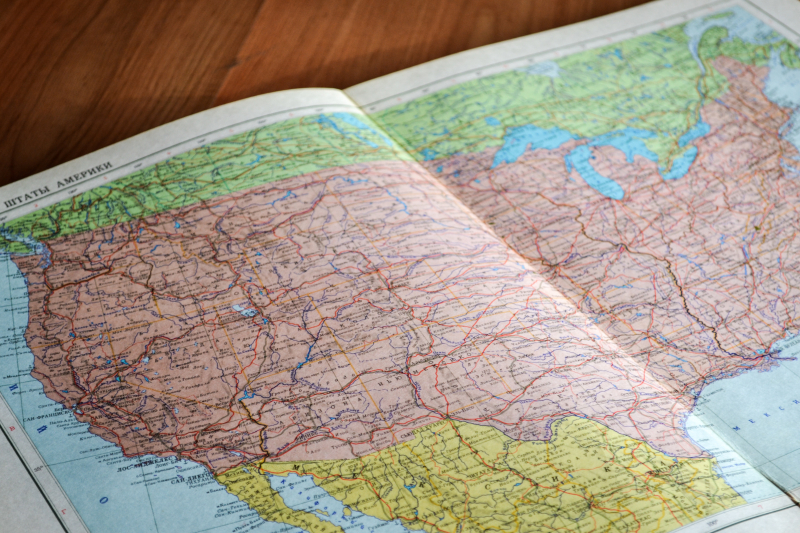
Image by John-Mark Smith via pexels.com 
Image by Vinta Supply Co. | NYC via pexels.com -
There is simply no comparing free with paid labor when it comes to labor expenditures. Because of this, the earnings of working-class men in the Southern states were drastically reduced. Slaves were primarily employed in agriculture, but even free laborers in industrial jobs like construction lost their ability to collectively bargain because state governments required slave owners to donate their slaves' labor for public works, which led to the permanent employment of hundreds of thousands of slaves in those positions. As a result, by 1860, the average annual wage for free laborers in the South was $103, compared to $141 for workers in the North.
The class who owned slaves benefited secondarily from this. Many white laborers were forced to participate in the slave trade themselves because the majority of industries did not provide living wages. In order to keep Black slaves in line, overseers and slave-catchers created more racial hatred, which boosted popular support for slavery.
Image by Quintin Gellar via pexels.com 
Image by Nextvoyage via pexels.com













